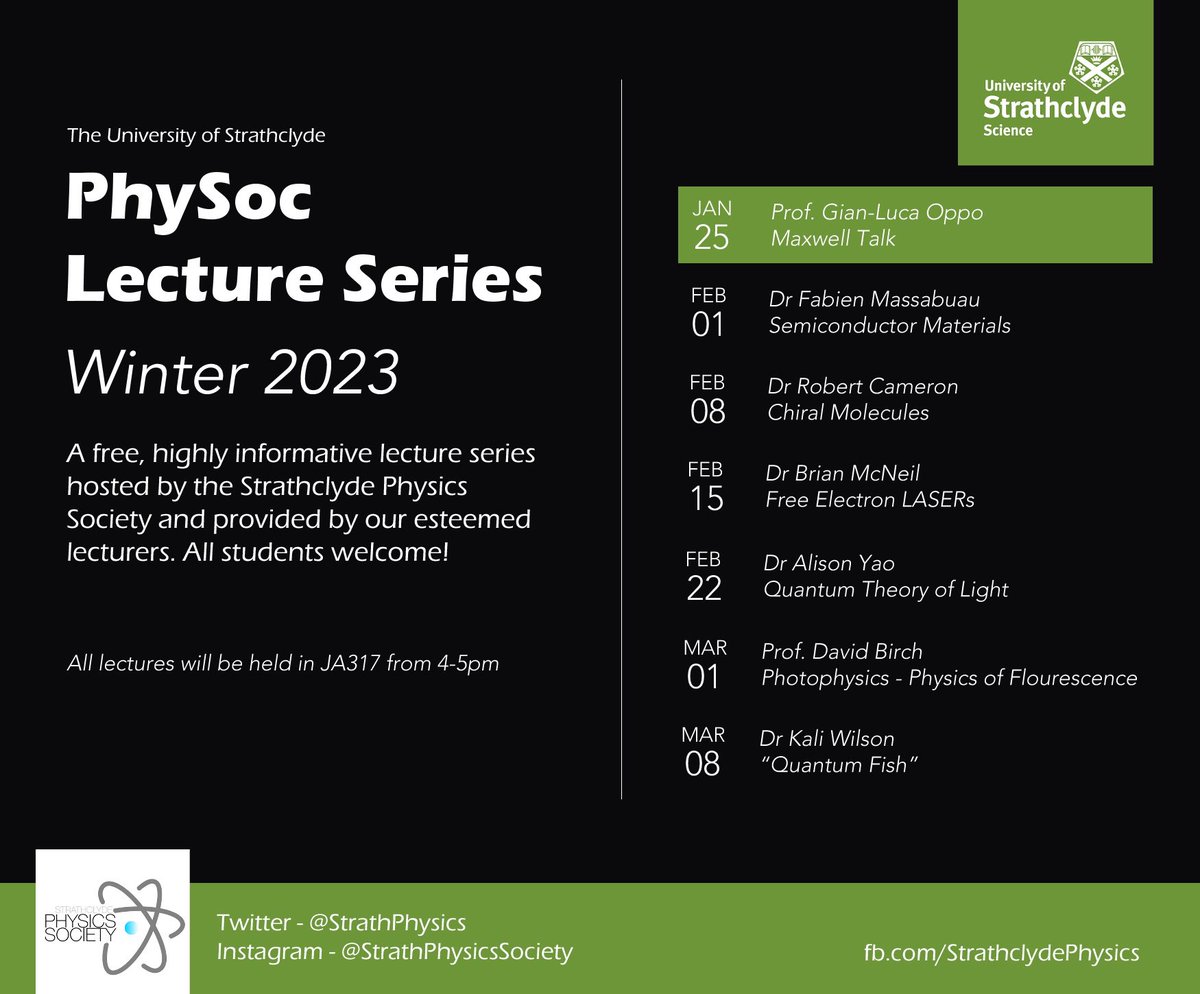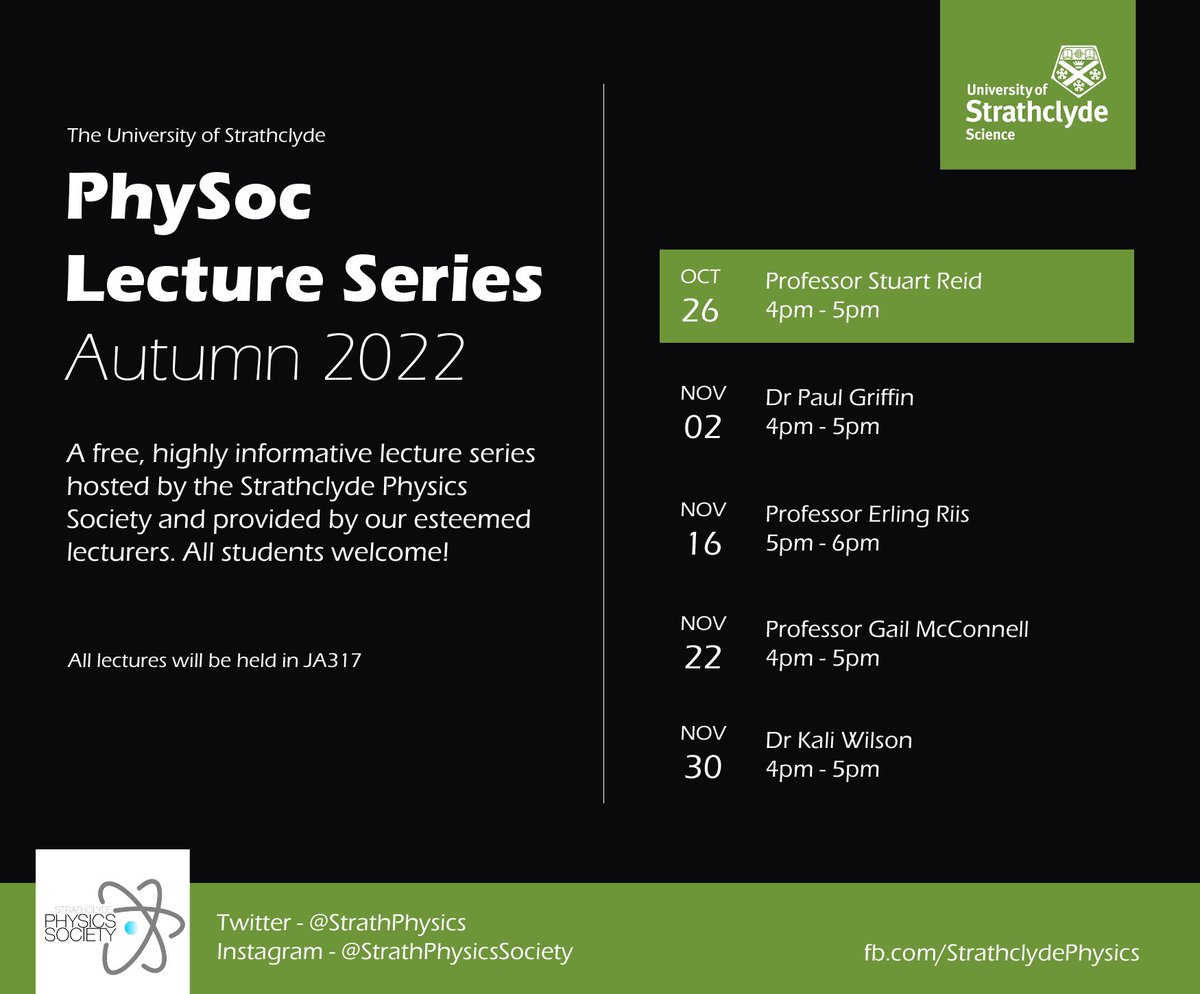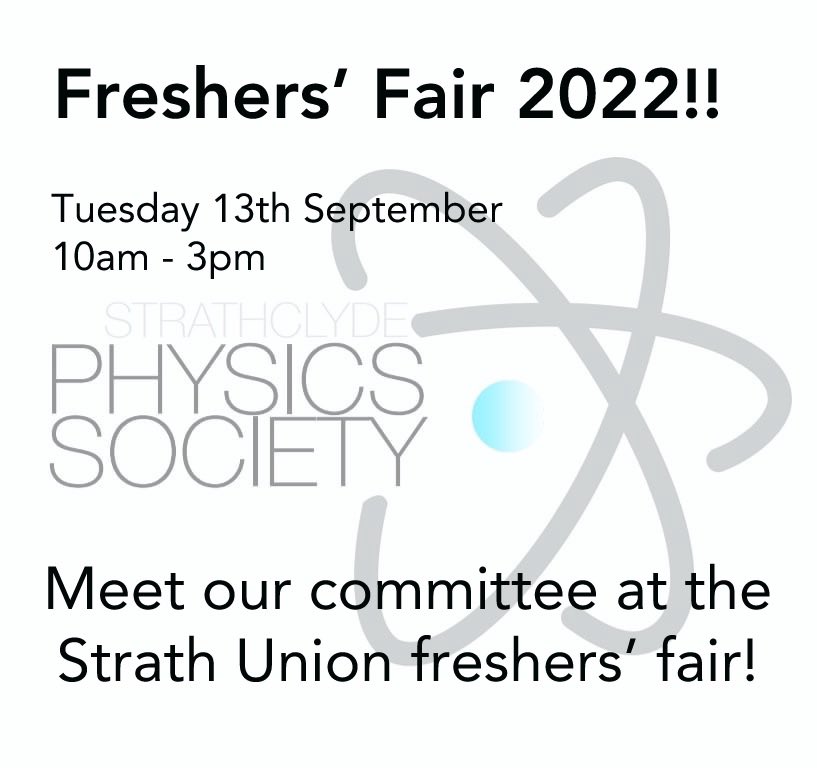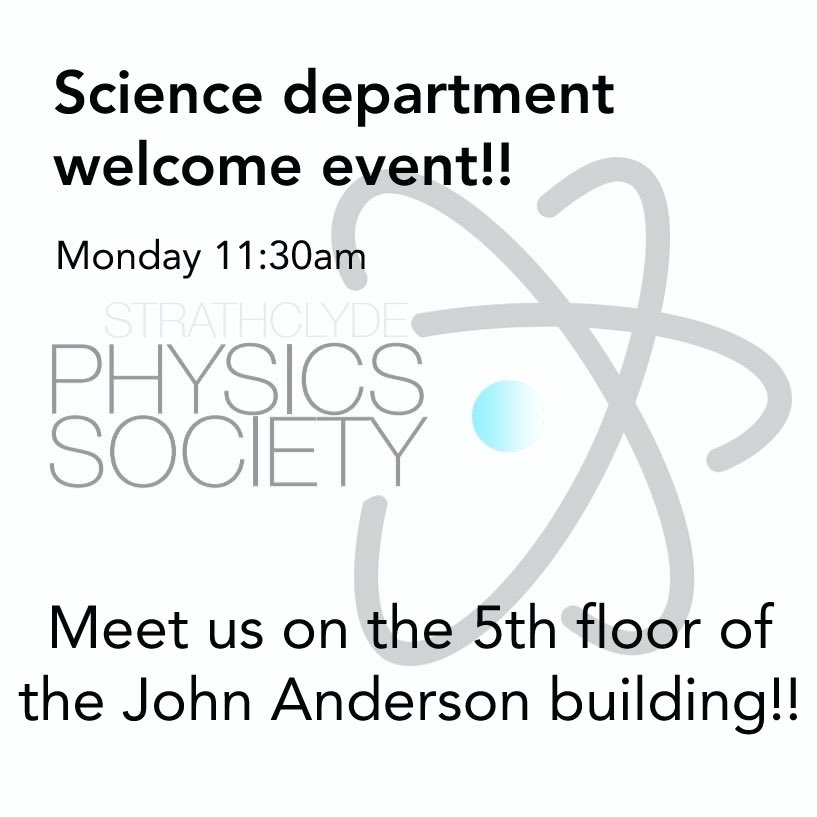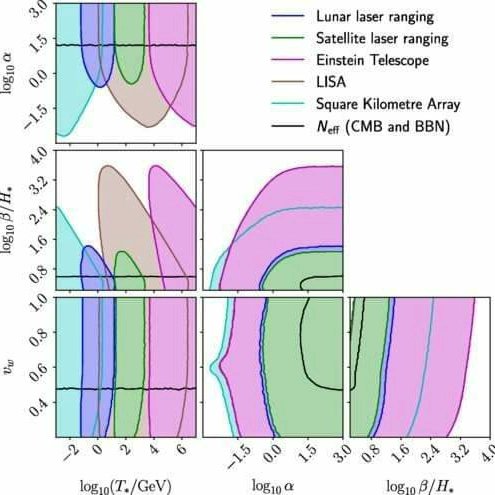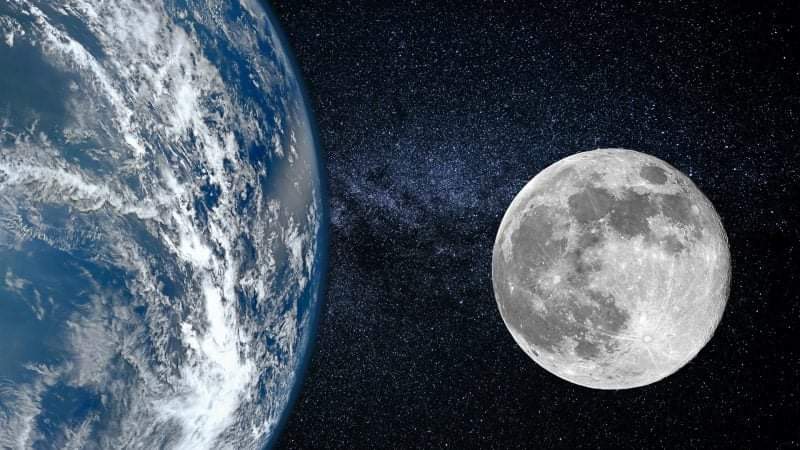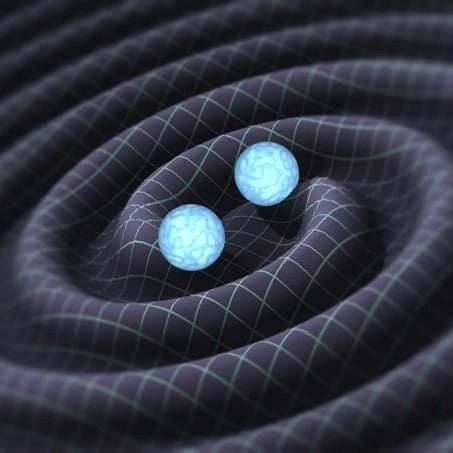
Strathclyde Phys Soc
@StrathPhysics
Followers
279
Following
76
Media
81
Statuses
585
The official twitter account for The University of Strathclyde Physics Society. Please follow for updates of meetings, events and fun physics news!
Glasgow
Joined September 2013
RT @AnrcStrathclyde: Ensuring that we ‘learn the lessons of history’ is somewhere between a universal aspiration and a cliché, but how many….
0
1
0
RT @aliyao8: I was lucky enough to help organise CUWiP2022 last year with the wonderful @muellenbroich and @SarahCroke1 and see for myself….
0
3
0
RT @PhysicsStrath: Here are the entries of our Physics jack-o’-lantern competition. Visit our Instagram page to cast your vote for best pum….
0
3
0
RT @scope_strath: We are back with an in-person SCOPE event! . Have you recently started your PhD and would like to hear practical tips fro….
0
2
0
RT @StrathPhysWiSPA: Join us on the 25th of October (next Tuesday) for our Welcome Event - featuring a talk by Professor Lyndsey Fletcher (….
0
7
0


